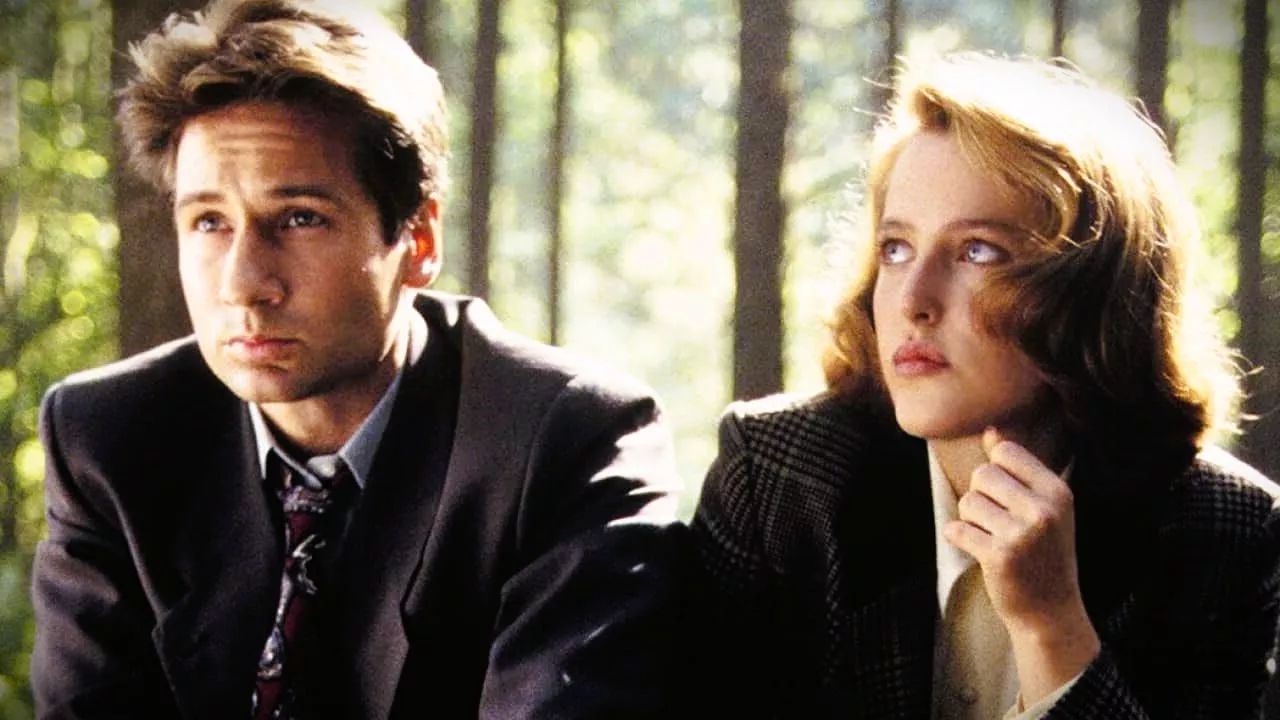Reflecting on the impact of pop culture from three decades ago, it’s evident how instrumental it was in shaping the contemporary entertainment landscape. With our collective enthusiasm for the past, using phrases like “buggin’ out,” “talking to the hand,” and “chill pills,” we have an opportunity to delve into the realm of television and explore the myriad ways in which 90s TV paved the way for the current era, often pinpointed by some as commencing with the emergence of ‘The Sopranos‘ in ’99.
During this period, young adults sharing living spaces unexpectedly became the epicenter of sitcoms, and it also marked the rise of individual stand-up comedians. The Generation X cohort enjoyed a surge in compelling drama, a departure from the experiences of previous generations, with the credit partly attributed to the accomplished producer Aaron Spelling, whose iconic zip code creation set the stage. Remarkably, ‘Star Trek,’ having already made a successful leap from TV to the silver screen, accomplished a second extraordinary transition by returning to television (in the late 80s) and flourishing with an expanded universe and fresh characters throughout the 90s.
The phenomenon of ‘Twin Peaks‘ introduced an element of cinematic peculiarity to mainstream audiences, pioneering what we now term “Water Cooler TV” and catalyzing discussions. In a distinct and diverse manner, ‘The X-Files’ and ‘NYPD Blue’ each revolutionized procedural television, leaving indelible marks on the genre. The debt we owe to the transformative television of the 90s is vast, almost overwhelming, as it laid the foundations for the captivating content we cherish today. Instead of attempting an exhaustive account, let us highlight some of the pivotal moments that forged significant paths for the television landscape we currently embrace and adore.
Twin Peaks: Shaping TV’s Evolution
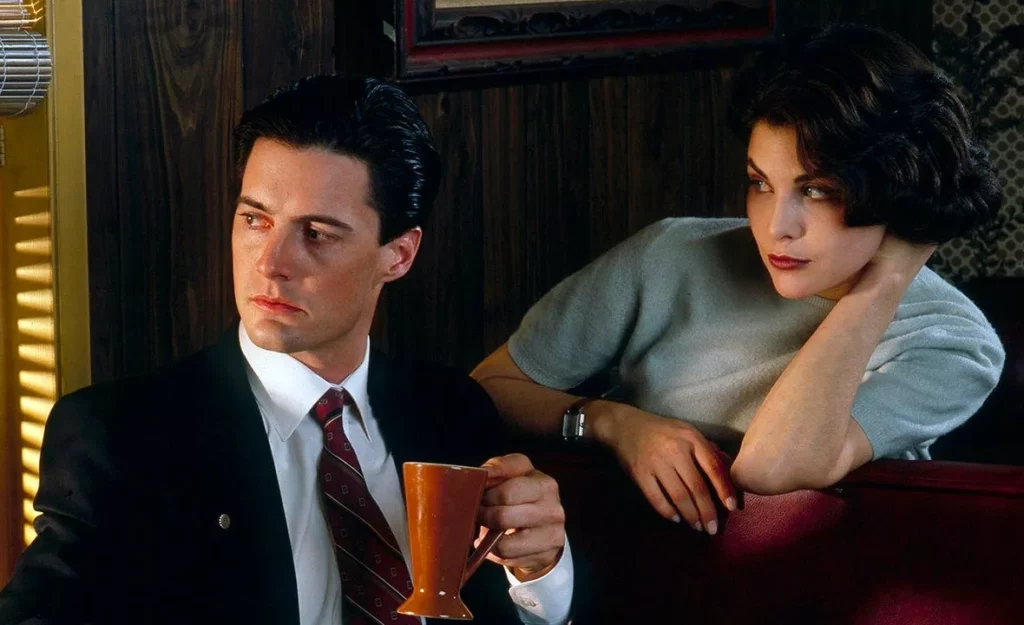
Certainly, the moniker “Peak TV” may have been attributed to FX Content/FX Prods. chairman John Landgraf, who acknowledged the surge in scripted TV shows owing to the influx of streaming platforms in the past decade. Yet, a pivotal moment in television history can be traced back to 1990, where all eyes converged on a singular show – Twin Peaks. Although the series didn’t extend beyond its second season, the initial eight episodes of Season 1, aired in the spring of ’90, ignited an immediate phenomenon. It witnessed a wide television audience wholeheartedly embracing the surreal creations of David Lynch, a master of nightmare cinema. The show was a remarkable blend of Lynch’s distinct cinematic style and an unconventional narrative that delved into the realms of magic and science fiction.
Twin Peaks played an integral role in shaping several fundamental concepts. Primarily, it laid the foundation for what we now term “Water Cooler TV” and laid the groundwork for long-form mystery television. Unlike the routine of a new murder case every episode, Twin Peaks revolved around the singular mystery of who killed Laura Palmer. This format fostered discussions among viewers, reminiscent of interactions around the workplace water cooler, even in the absence of widespread internet usage. The show spurred the exchange of new clues and theories, foreshadowing the interactive engagement prevalent in online forums today.
Furthermore, Twin Peaks served as a bridge between the realms of cinema and television. Traditionally, a significant divide existed between the two mediums, with TV actors rarely transitioning to successful movie careers and vice versa. Notably, David Lynch’s transition to television with Twin Peaks was perceived as a step “backward,” imbuing the series with a sense of gravitas and heightened attention. Over the ensuing decades, the demarcation between movies and TV has significantly diminished. For instance, an accomplished figure like Meryl Streep, with 21 Oscar nominations, can seamlessly transition to a television series like “Only Murders in the Building,” indicating the evolving fluidity between the two mediums.
Twin Peaks also introduced a distinct visual language to television, characterized by its artistic, captivating, and visually stunning aesthetics. This infusion of artistic sensibilities into a medium that historically operated differently was akin to an auteur’s touch. Without Twin Peaks pioneering this particular standard, shows like Breaking Bad and Better Call Saul may not have adopted a cinematic style reminiscent of arthouse films. These series exhibited a penchant for cinematic landscapes, detailed machinery, and even silent stretches that defied conventional dialogue. Although Twin Peaks differed in execution, its influence paved the way for television to embrace cinematic elements and push the boundaries of the medium. Notably, it drew a staggering 35 million viewers into its enigmatic world of horror, sorcery, cryptic dreams, and surreal transformations.
Additionally, it’s worth noting that Twin Peaks was co-created by Mark Frost, who had previously contributed his writing and executive story editing talents to the groundbreaking 80s police series, Hill Street Blues. This earlier show was celebrated for its substantial contributions in reshaping the police procedural genre in significant and historic ways.
X-Files and NYPD Blue
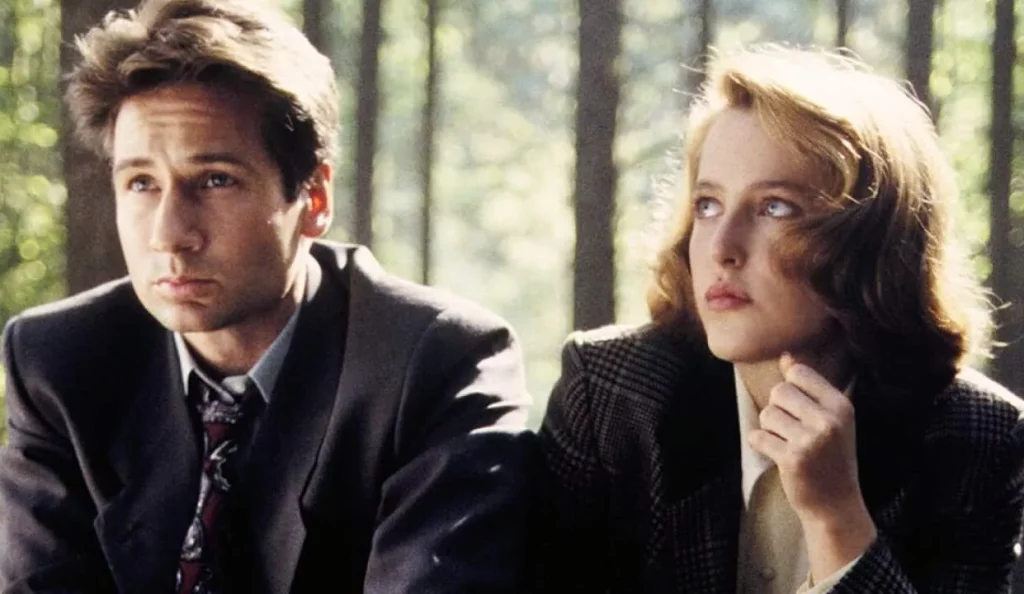
Twin Peaks might have been subtly sci-fi at best, but the ’90s still saw a thriving science fiction genre, fueled by Fox’s budding show centered around two FBI agents delving into the enigmatic and uncanny. The X-Files, masterminded by Chris Carter, took the conventional formula of a “case of the week” series and mismatched investigators, infusing it with an essential underlying narrative, a show-spanning “mythology,” focusing on the government’s concealment of extraterrestrial existence.
While much of the series followed David Duchovny’s Fox Mulder and Gillian Anderson’s Dana Scully investigating local oddities and unraveling mysteries in small towns, a compelling conspiracy loomed in the backdrop, resonating with real-world anxieties about alien presence. The X-Files redefined the cop show’s boundaries, skillfully weaving together monster-of-the-week escapades, stand-alone character explorations, and an overarching serialized narrative.
This innovative blend influenced subsequent procedural dramas, leading to hybrids like The X-Files, which fused episodic investigations with overarching character-driven enigmas. The show’s success also opened doors for more genre television, proving the viability of sci-fi as a lucrative enterprise. Series such as Fringe, Person of Interest, Supernatural, Evil, Warehouse 13, Lucifer, and even non-supernatural fare like The Blacklist and Blindspot followed suit.
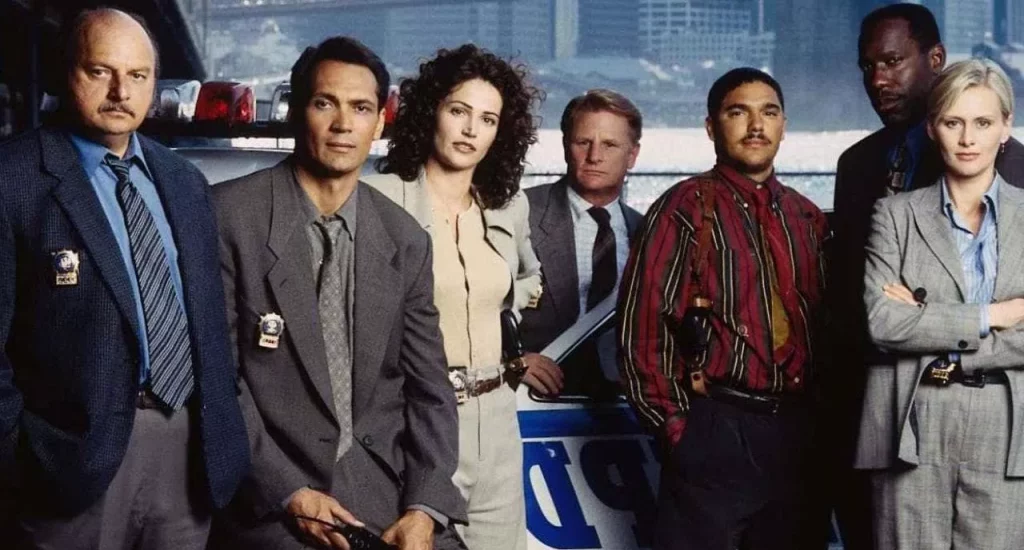
While the open-minded Mulder and skeptical Scully embarked on extraterrestrial escapades, another more traditional procedural was charting new territory, pushing television into uncharted waters. Enter NYPD Blue, a police drama that emerged at a time when Westerns had waned, leaving a void filled by doctor, lawyer, and cop shows. Yet, NYPD Blue pushed boundaries in the 10pm slot, navigating themes of sex, complex morality, and gritty realism. This series, from the creative mind behind Hill Street Blues, Steven Bochco, dared to introduce flawed, morally ambiguous characters, sometimes difficult to root for. Even the central figure, Dennis Franz’s Andy Sipowicz, was a loud, bigoted alcoholic. Though the character eventually underwent transformation, this was a daring stance for a lead in a cop-centric show.
Airing on ABC in 1993, NYPD Blue flaunted nudity and explicit language on network TV, sparking controversy by presenting its police officers as anti-heroes. The core character, Andy Sipowicz, embodied a progression from a brash, prejudiced figure to a recovering alcoholic, a highly unconventional choice for a cop show protagonist. The show’s impressive 12-season run demonstrated the audience’s appetite for mature, intricate, and challenging narratives. NYPD Blue’s impact paved the way for the evolution of HBO’s original programming, forming a trajectory from Hill Street Blues through NYPD Blue, Oz (1997), The Sopranos (1999), The Wire (2002), and beyond. While its genesis was network television, the torch was soon passed to premium cable, officially marking the inception of the Anti-Hero Era.
Additionally, basic cable joined the narrative years later, fostering series like Breaking Bad, The Shield, Damages, Sons of Anarchy, and more, further fueling the momentum of intricate, character-driven storytelling.
Teen Dramas and Buffy’s Legacy
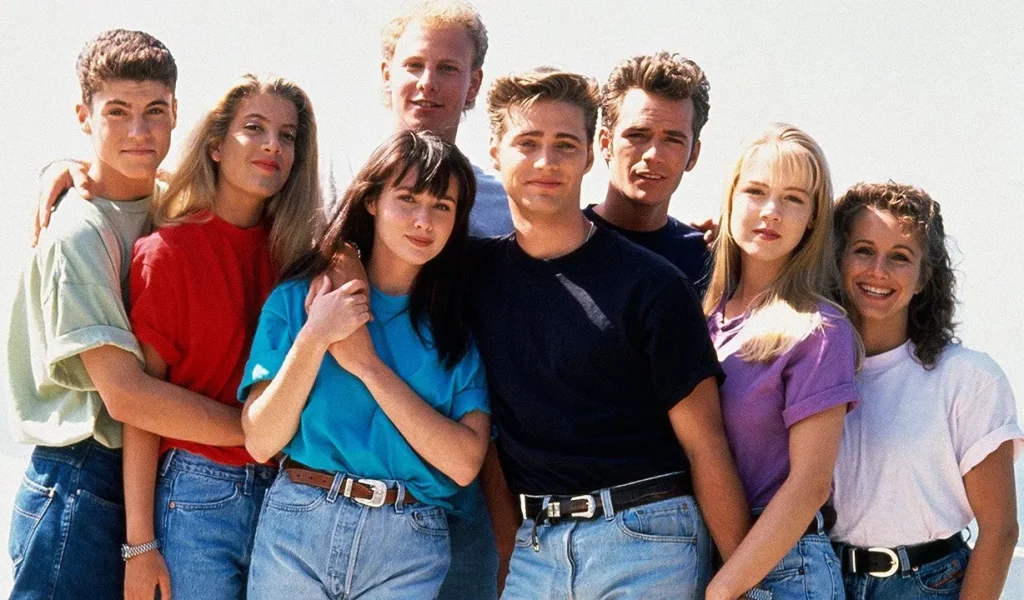
The 80s witnessed a transformative blend of MTV and home video game consoles that gradually altered the experiences of kids. At the decade’s start, older Gen X youngsters reveled in outdoor activities from dawn till dusk, while the late 80s introduced a shift towards immersive indoor pursuits. These younger Gen X individuals immersed themselves in Def Leppard videos and conquered challenges like Castlevania III on their home consoles. As more kids embraced extended TV sessions, the idea emerged to offer them tailored content beyond the typical after-school or family-oriented fare – shows specifically designed for them.
Amidst the array of 80s primetime dramas featuring cops and lawyers, Night Soaps emerged, exemplified by Dynasty, Falcon Crest, Dallas, and Knots Landing. While centered around affluent adults behaving recklessly, the concept sparked an idea: What if there were a primetime soap opera aimed at high-schoolers? This gave rise to Beverly Hills 90210. Conceived by creator Darren Star (known for Sex and the City and Emily in Paris), the show aimed to address a previously untapped audience – teenagers – through a narrative that tackled serious issues such as date rape, homophobia, drug abuse, domestic violence, and eating disorders.
From the inception of 90210, an entire television landscape was birthed.
Notably, 90210 spawned spin-offs like Melrose Place, Models, Inc., and the spiritually related show The Heights. Early attempts to capture authentic teen experiences, both comedic and poignant, emerged in the form of My So-Called Life (1994) and Freaks and Geeks (1999), though their premature cancellation cut their potential short. These shows delved into the turmoil of suburban high school life from distinct perspectives, featuring future stars, yet lasting only a single season each.
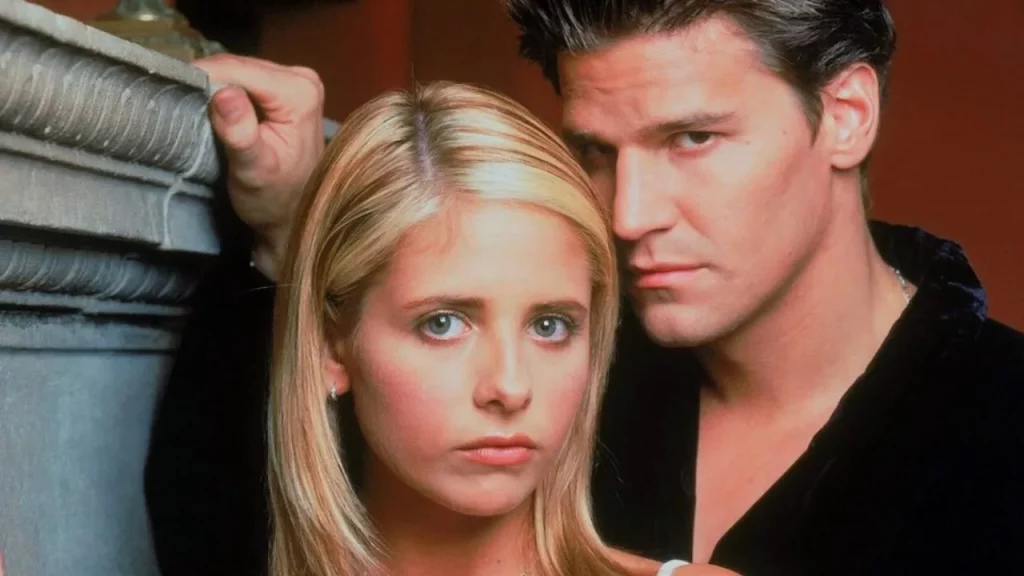
The 90s ushered in an era teeming with young adult (Y/A) dramas. Party of Five admirably carried the torch, but The WB struck gold with Dawson’s Creek, Felicity, and the revolutionary Buffy the Vampire Slayer. A movie concept that stumbled due to tonal missteps found its stride as a pitch-perfect TV series, blending Y/A drama with horror elements. Buffy proved a pivotal moment, akin to ABC’s Lost a decade later, inspiring aspiring TV writers.
Buffy melded the surging genre TV trend with Y/A drama, cleverly employing a procedural hybrid model reminiscent of The X-Files. It introduced the notion of the “Big Bad,” an overarching antagonist built up throughout the season for a climactic confrontation in the finale. This narrative device continued to shape shows for years, including Dexter, Justified, Chuck, Spartacus, Supernatural, and Veronica Mars. Notably, even The Boys incorporates a variation of this concept, a nod to creator Eric Kripke’s influence from his work on Supernatural.
The CW subsequently embraced a new realm of Y/A genre programming, leveraging the foundation laid by The WB. While not asserting a direct causality, the evolution from 90210 to The CW’s Arrowverse hints at the profound impact of the teen-oriented primetime soap on shaping the television landscape.
Friends, Seinfeld, and Cultural Shifts
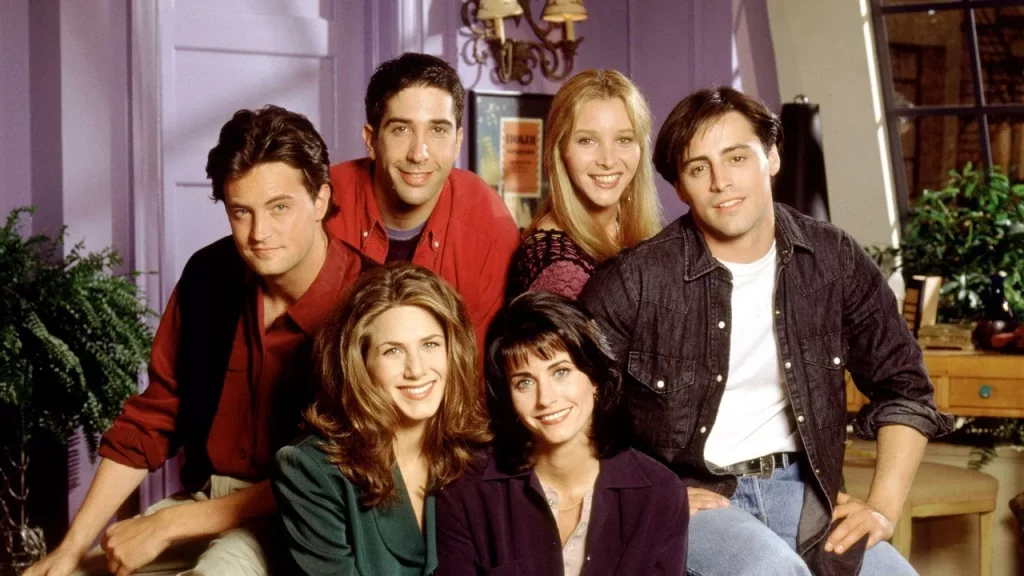
Both Friends and Seinfeld, the dominant sitcom forces of the 90s, wielded significant influence in reshaping TV comedy. While they explored distinct comedic realms, both primarily revolved around the lives of young, single friends congregating in apartments to discuss their dating escapades.
Before their emergence, sitcoms largely focused on specific family dynamics (married couples or families with children) or workplace interactions among colleagues and patrons. Friends and Seinfeld introduced a novel narrative: individuals with diverse jobs, families, aspirations, and paths, coming together due to genuine camaraderie.
Although director Cameron Crowe’s 1992 film “Singles” has been suggested as inspiration for Friends, its creators, David Crane and Marta Kauffman, have refuted this claim. Regardless, the early 90s marked a flourishing era for attractive young adults navigating the dating scene, conversing about relationships, sharing quirks, adopting trendy styles, and even owning monkeys. The impact of Friends spawned numerous imitators (The Single Guy, Boston Common) with varying degrees of success. However, its lasting influence materialized years later through shows like How I Met Your Mother, New Girl, Happy Endings, Cougar Town, and The Big Bang Theory.
It’s also worth acknowledging Living Single, which debuted a year before Friends. While it didn’t achieve the same cultural dominance, it ran for five seasons and spotlighted a close-knit group of successful African American women friends.
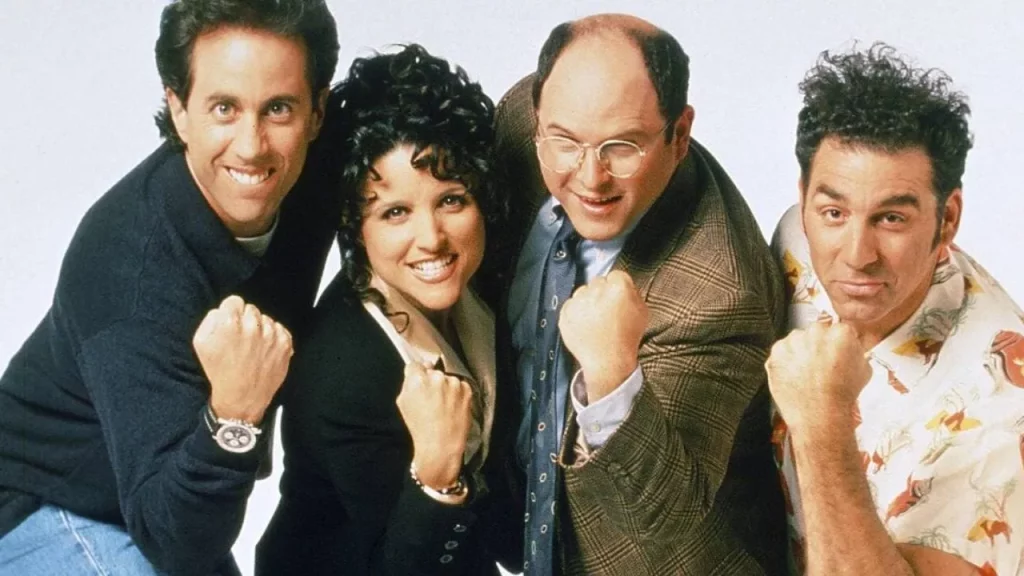
Seinfeld shared some similarities with Friends but left a distinct mark. It notably led to numerous stand-up comedians securing their own sitcoms. Unlike the Friends imitations, this formula yielded better results, exemplified by The Bob Newhart Show, Roseanne, Sanford & Son, and Home Improvement. These series starred comedians who honed their unique comedic style. However, Seinfeld conveyed a sense that anyone could achieve this, as depicted humorously in Jon Favreau’s Swingers where a character humorously moves to LA under the belief that sitcoms are handed out to stand-ups at the airport.
Seinfeld’s most impactful legacy, however, lies in its introduction of cringe-comedy and the portrayal of sitcom characters as inherently flawed, sometimes dreadful individuals – both to others and among themselves. This notion resonated significantly and paved the way for successors like Larry David’s Curb Your Enthusiasm. Shows such as It’s Always Sunny in Philadelphia (now the longest-running live-action American sitcom), The League, Blue Mountain State, You’re the Worst, Veep, and Eastbound & Down, among others, followed suit, featuring lead characters or ensembles with pronounced character flaws. As Seinfeld progressed, it embraced and intensified the lunacy of its protagonists, ultimately culminating in a series finale where they were incarcerated for their insensitivity and self-centered behavior.
An Animated Renaissance
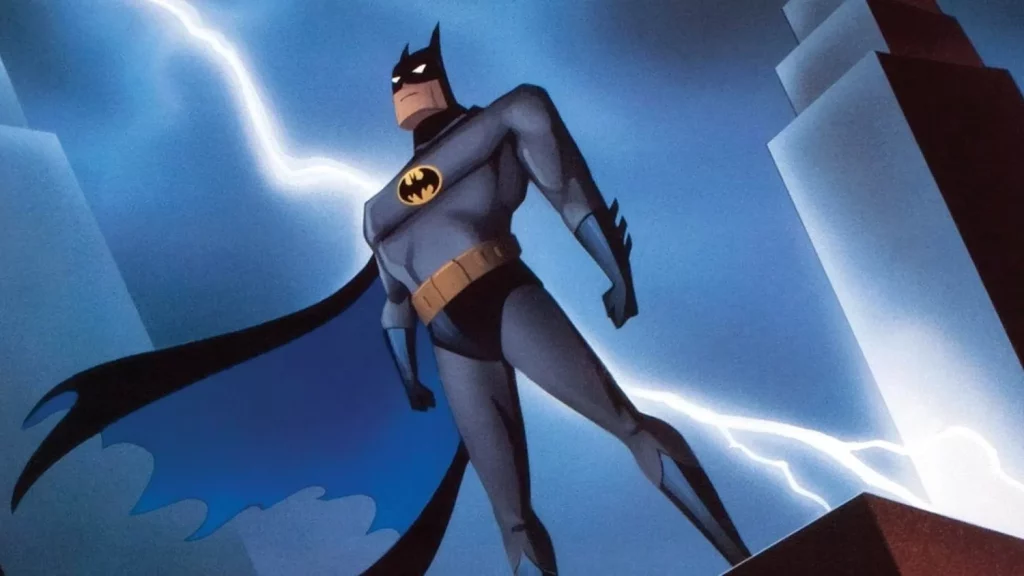
The 1990s emerged as a golden era for animation, a time when animated content transcended its traditional confines and resonated with a broader audience. This transformative period allowed teenagers, young adults, and even older viewers to revel in animated offerings without the need to forsake “childish things.” Animation evolved in tandem with its viewers, and this era witnessed the revival of Disney films from the lackluster 80s, sparking a cinematic renaissance. Simultaneously, television animation elevated its game across the spectrum.
While superhero movies were taking their initial steps towards prominence, particularly exemplified by Batman’s success, television presented a much richer comic book universe. Batman: The Animated Series, a standout production that introduced the beloved character Harley Quinn, along with Spider-Man and X-Men, displayed remarkable fidelity to comic source material. These shows skillfully nurtured characters and storylines, resonating with a new generation of viewers. The fanbase cultivated by these series, including non-comic book adaptations like Gargoyles, laid the foundation for the enthusiastic audience that would embrace the Spider-Man and X-Men films that marked the early 2000s. In fact, the X-Men animated series played a pivotal role in inspiring the original X-Men movies.
Beyond the realm of superheroes, the animation landscape underwent further transformation. MTV’s Liquid Television, a pioneering platform, ushered in groundbreaking shows such as Beavis and Butt-Head, Daria, and Æon Flux, targeting a college-age demographic with boundary-pushing content. Similarly, The Ren & Stimpy Show ventured into the realm of the strange and provocative, sparking controversy and paving the way for the advent of Cartoon Network’s Adult Swim.
Moreover, the 90s saw animation breakthroughs into primetime with the emergence of The Simpsons, Futurama, and Family Guy. Cartoons in this era were crafted to resonate with a diverse range of viewers, effectively dismantling the notion of animation as a separate and limited genre. Instead, animation became recognized as a dynamic method of storytelling on par with other established mediums.
In essence, the 1990s reshaped the animation landscape, pushing the boundaries of traditional norms and ushering in a new era of acceptance and appreciation for animation as a versatile and impactful form of storytelling.
Star Trek’s Resurgent Legacy
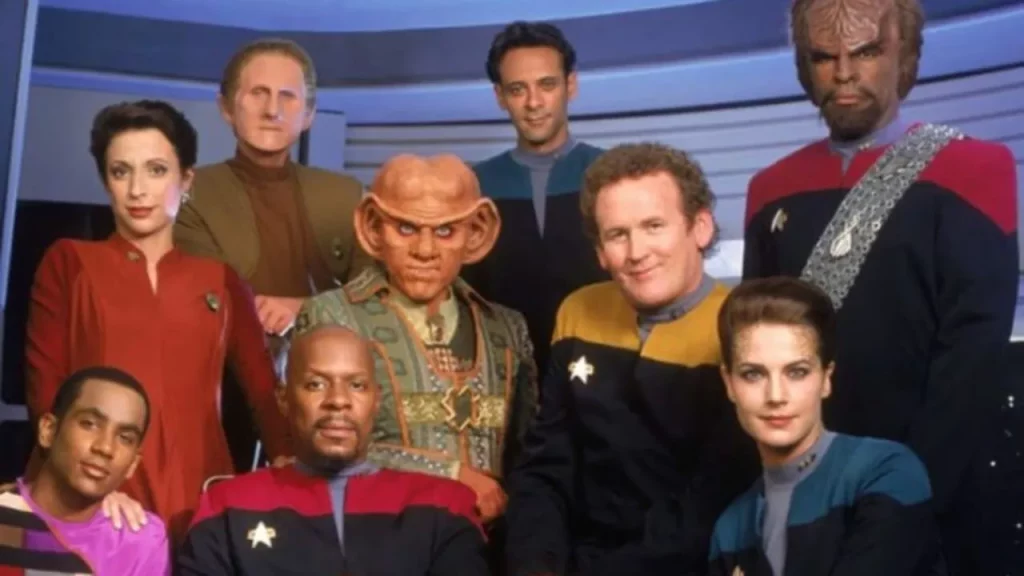
In the present era, we often overlook the significance of expansive franchises that seamlessly traverse various media and platforms. We also tend to underestimate the prevalence of legacy sequels and the nostalgic resurgence of cherished elements from our past, even after substantial time lapses. The movie “Rocky Balboa” in 2006 played a pivotal role in popularizing the concept of sequels arriving decades later, and this trend continues today with a barrage of revivals. Whether it’s movies like “Blade Runner 2049,” “Ghostbusters: Afterlife,” and “Top Gun: Maverick,” or television shows such as “Cobra Kai,” “Obi-Wan Kenobi,” “Ash vs Evil Dead,” and yes, “Twin Peaks: The Return.”
Star Trek stands as one of the pioneering franchises that truly expanded and extended its reach. What does this entail? Well, Star Trek enjoyed a unique opportunity to transform itself into a successful film series, even a decade after its original 1960s television run. Remarkably, it retained the original cast, portraying the same characters, albeit older. The movies, thriving throughout the 1980s, effectively acted as sequels to the original show. As the late 1980s unfolded, a decision was made to propel the Trek universe forward, leading to the birth of “Star Trek: The Next Generation,” introducing a fresh ensemble of characters. This new show was set far enough into the Federation’s future that it precluded the original cast from simply resuming their roles and passing the torch to the new generation without resorting to sci-fi contrivances.
In essence, this was a bold move. With a flourishing movie franchise in place, why venture back to the realm of television? Despite the prevailing notion at the time that TV was somehow “inferior” to cinema, Star Trek took the risk, diverging into uncharted territory with a completely new crew aboard the Enterprise. This gamble yielded a substantial resurgence in popularity, cultivating a new wave of fans and subsequently giving rise to more TV series (“Star Trek: Deep Space Nine,” “Star Trek: Voyager,” “Star Trek: Enterprise”), turning the 1990s into a veritable haven for the franchise. This revitalization etched such a profound cultural impact that it paved the way for subsequent Trek revivals, exemplified by recent offerings like “Star Trek: Discovery,” “Star Trek: Picard,” “Star Trek: Strange New Worlds,” and beyond.
Star Trek’s return to television enabled it to delve deeper into its lore and expand its fanbase, culminating in a captivating universe that viewers were eager to explore independently. The franchise evolved from a mere sequence of sequels featuring familiar faces to a sprawling, interconnected realm complete with crossovers. Notably, “Star Trek: Deep Space Nine” emerged as the quintessential 90s series, a title cherished by many fans in retrospect. Despite being initially considered an outlier due to its unconventional setting (not centered around a space-exploring vessel), DS9 now stands as a remarkable achievement, being ahead of its time in terms of themes and storytelling methods. It notably embraced serialization to an unprecedented degree within the Star Trek canon, venturing into darker and more complex territories, delving into the horrors of war and exploring anti-heroic themes. The show’s influence radiated even further, paving the way for the splendidly gritty and intricate reboot of “Battlestar Galactica,” helmed by DS9 writer Ronald D. Moore.
Star Trek’s triumphant return to television ensured its enduring legacy, fortified its future, and expanded its mythos in ways that Star Wars would only attempt years later. Today, we’ve grown accustomed to massive franchises resuming, taking hiatuses, and reemerging with revivals, prequels, and more. The 20-year gap between the original Star Trek series and “Star Trek: The Next Generation” alerted us to the possibility that beloved favorites could indeed return in grand fashion.
